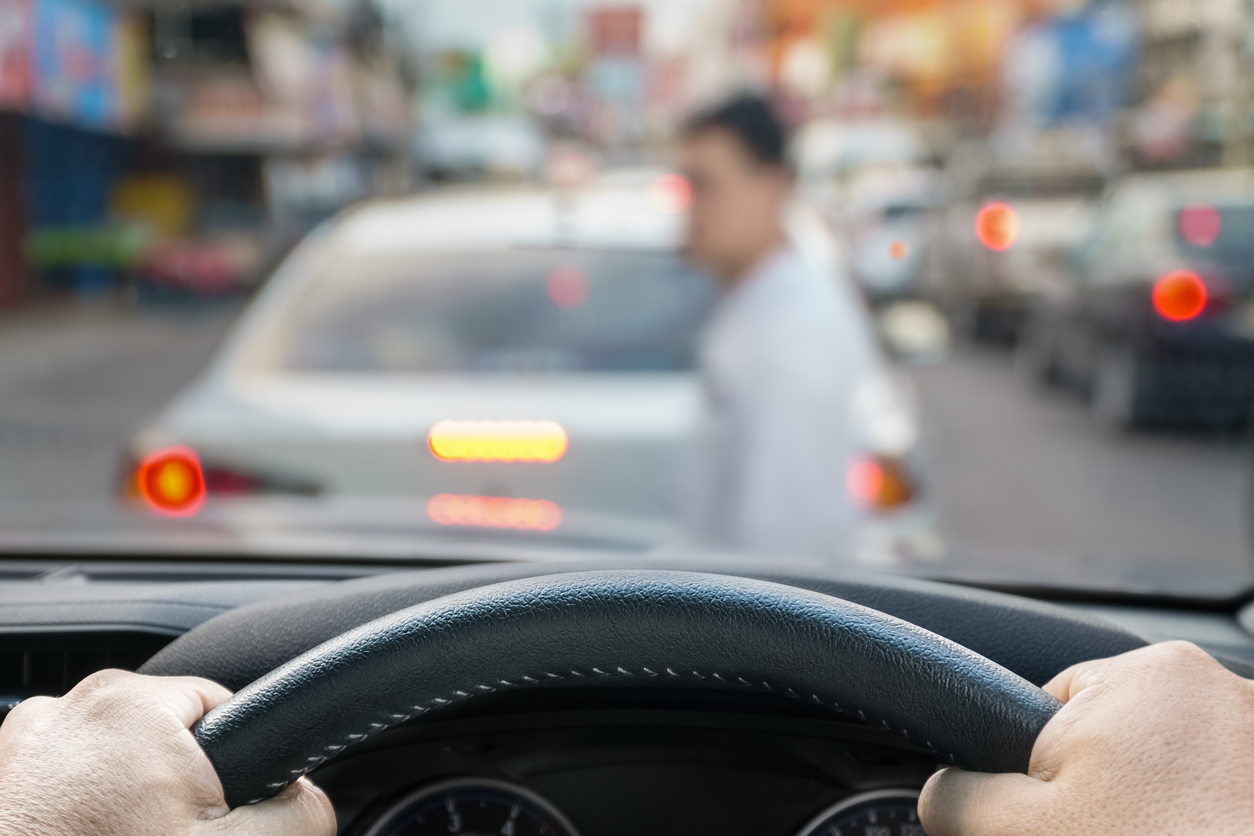You’ve been hit by a car while crossing the street on foot–what happens now?
The exact process to follow if you are involved in a motor vehicle accident has been ingrained in your psyche since your first day behind the wheel. You have been told to call 911 if anyone is hurt or if you suspect a driver is impaired. You know you should take pictures of the scene of the accident, and to exchange contact and insurance information with every party involved.

You have been told to file an insurance claim–the beginning of a weeks-long process to determine fault and the cost of damages.
What fewer of us have been told is what to do if you have been struck by a vehicle as a pedestrian. You may be surprised to learn that the process is strikingly (ouch) similar.
1. Move Out of the Road:
The most important thing that you can do after you have just been struck by a vehicle is to move out of further harm’s way, if you can. If you run the risk of aggravating your injuries by moving, you should definitely stay put until the paramedics arrive, but you’re highly vulnerable on a roadway. If you can’t move, try to have someone direct traffic around the scene.
Focus on trying to stay calm. This may be difficult given the situation, but calmly communicating with everyone will result in a more sympathetic approach to your ordeal and a smoother process by keeping all heads cool.
Immediately following an accident is also a good time to avoid social media. Tweeting about the accident, or posting about it on Snapchat, Facebook, or Instagram has the potential to make you appear negligent if you end up having to fight a legal battle, and can compromise your case. Insurance companies will use anything you post against you.
2. Keep Everyone at the Scene:
The police should be contacted immediately in the case of any accident causing injury. Don’t downplay your condition: if you’re possibly hurt in the slightest bit, call 9-1-1 or have someone do so for you. It is much easier to get statements at the scene of the accident than it is to chase witnesses afterward—and stories invariably change. It is also better to have all voices heard while the facts are still fresh.
While waiting for the police to arrive, do your best to keep the driver and any witnesses from leaving. You may be tempted to downplay the incident if you don’t think your injuries are serious – don’t fall into this embarrassment or adrenaline-fueled trap. In a phenomenon known as “stress-induced analgesia,” the adrenaline coursing through your body following an accident can mask the pain a broken bone—or even worse—make it seem it is only a minor injury. Ask everyone present to stick around for the next steps: don’t hesitate to remind them that leaving an accident scene is the most serious offence in Alberta’s Traffic Safety Act.
3. Collect Information from Everyone:
There is no such thing as too much evidence, document everything precisely! As with a motor vehicle accident, an injured pedestrian should document (either by writing it down or taking a photo):
- the motorist’s full name, registration, driver’s license number, insurance information, and license plate number;
- contact information from witnesses and ask if they have dash cams footage that they are willing to share;
- pictures of the scene, your injuries, the vehicle involved in the collision, and anything else you think is relevant;
- the exact time of the accident and the direction you were moving on at the intersection or crosswalk; and
- all damages to your personal belongings. That includes your phone or iPod and any rips or blood stains on your clothing. If you replace any of these items, keep your receipts.
4. Seek Medical Attention Immediately:
Don’t dismiss your injuries. Seek medical attention immediately, even if you don’t think you are seriously injured. A headache isn’t always just a headache. It can be a warning sign of a much more serious ailment.
Going to the hospital immediately following an accident will get you through triage quicker than seeking medical attention the next day or even a couple of days later. Being assessed by a medical professional right away also lowers your chances of aggravating injuries left untreated, and can identify internal injuries with serious consequences.
Consider your emotional state as well. Psychological injuries are a very real consequence of high-stress situations, with the potential to affect you for the rest of your life. If you feel the need to speak with a therapist, don’t let anything stop you.
5. Call an Injury Lawyer
You owe it to yourself to take steps to ensure that you receive the care and compensation that you deserve. Costs and impacts down the road are uncertain, so optimism is the enemy—presume the worst.
It’s never a good idea to negotiate with the driver’s insurance company yourself. You’re dealing with insurance industry experts trained to minimize your claim—it’s their job to do so. You need an expert in your own corner.
If you have been injured as a result of someone else’s negligence, hiring a lawyer with the experience and expertise to get you the compensation that you deserve isn’t negotiable. It is a must.
Call McGuiness Law for a free consultation and get the support that you need to move on. We cover all costs, with no fee unless we settle in your favour.